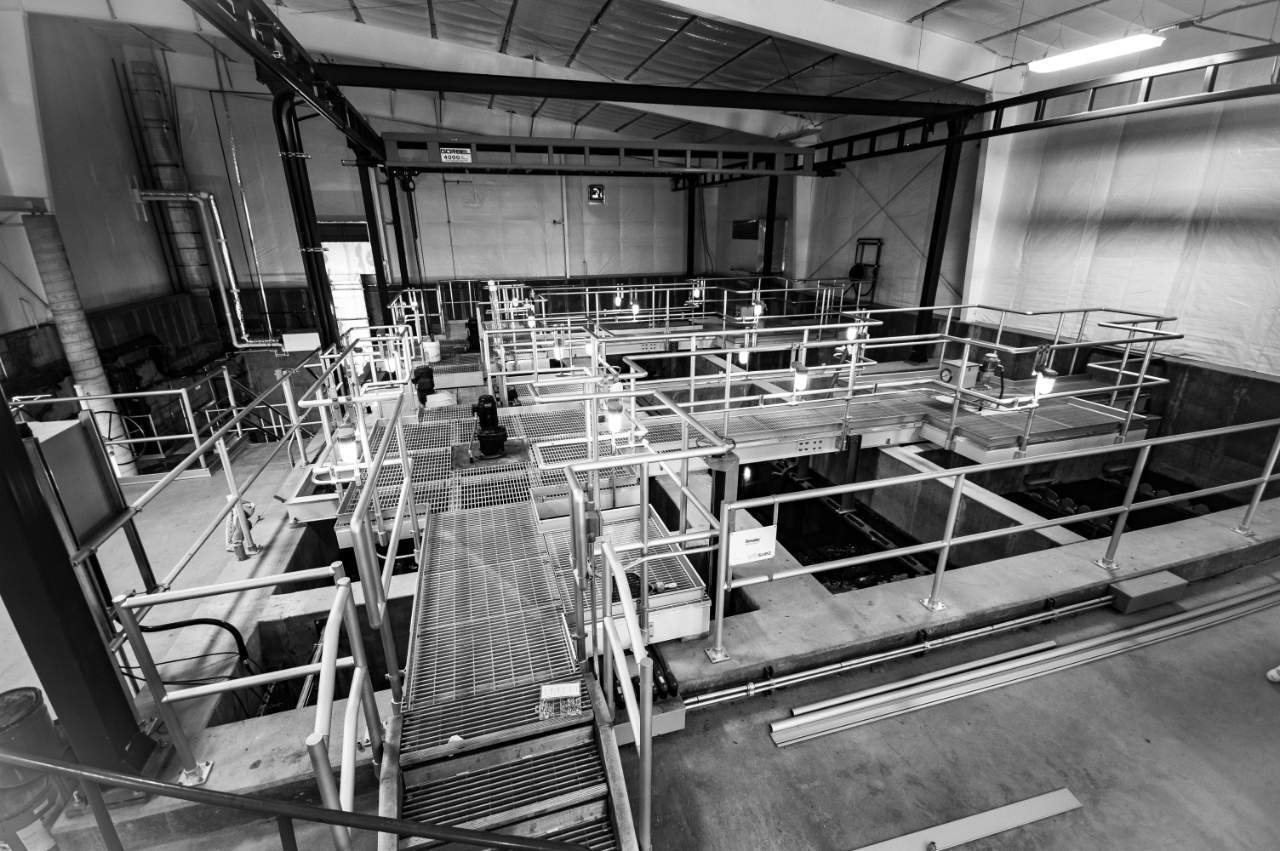Location, Location: The Key to Aeration in Wastewater Treatment

This article was originally published by KLa Systems, an Integrated Water Services company. It is appearing here as the first in a three-part series on water aeration. Read Part II here and Part III here.
As with any industrial process, the right tool for the job depends on the nature of the task at hand. In aerobic wastewater treatment, that optimal choice often comes down to a balance between the biological and financial demands of the application. Either way, here are several performance comparisons of how multiple aeration methods and locations stack up in industrial wastewater treatment applications.
Choosing a Technology That Fits
Every wastewater aeration technology fits a niche. While surface aeration was the most popular wastewater treatment aeration technique years ago — and still offers affordable functionality in certain applications — newer methods that employ millimeter-sized bubbles generated by compressed air have gained favor over the past few decades. These methods include a variety of fine-bubble, medium-bubble, and coarse-bubble implementations — some with a straight vertical bubble path and some with a horizontal or downward-angled bubble path.
Fine-bubble and coarse-bubble diffusers use compressed air dispersed upward through a disk or header perforated with a series of openings ranging from 1 mm in diameter to 5 mm or more. Jet aeration and slot-injector aeration techniques use a combination of pumped liquid mixed with low-pressure compressed-air bubbles discharged horizontally through jet nozzles. The physical characteristics of these combined liquid/air techniques provide enhanced oxygen transfer and thorough mixing in a single step — with added advantages for challenging, high-strength industrial wastewater environments.
Each of these aeration techniques benefits from specific surface or submerged placements within the wastewater treatment basin. Here is how they fit into the industrial wastewater environments faced with high biochemical oxygen demand (BOD) requirements.
Location as a Function of Depth
The depth of a wastewater treatment basin can dictate acceptable aeration technologies and impact efficacy and cost-efficiency across the various techniques.
-
- Surface Aeration. Lower-cost, high speed surface aeration options that pump streams of water into the air to disturb and aerate the wastewater surface are limited to shallower basins — typically a maximum of 15’. This approach is limited because of the potential buildup of biological solids that will settle out in deeper basins. It is most practical where inexpensive land is readily available to accommodate the greater surface-area coverage requirements of shallow basins needed to treat the equivalent volume of wastewater as a deeper aeration basin. Surface aerators are also used to supplement submerged systems where basin cooling is required.
-
- Submerged Bubble Diffusion. Fine-bubble (1 mm to 3 mm diameter) and coarse-bubble (>6 mm and up to 50 mm diameter) diffusers benefit from installation near the bottom of deeper aeration basins. That is because the longer exposure time of aeration bubbles traveling upward through the wastewater from the greater depth aids in greater oxygen transfer. Precise diffuser placement is important for even coverage without gaps, because the bubbles essentially travel straight up. Separate propeller mixing systems can also be used to help circulate the wastewater in specialty applications.
-
- Submerged Jet Aeration. Like bubble diffusion aeration systems, jet aerators and slot injectors are installed near the bottom of the aeration basin to take advantage of the exposure time as the bubbles make their way to the surface. Jet aerators, however, incorporate low-pressure air into a pumped liquid stream that is discharged horizontally or down toward the bottom of the aeration basin. This high-velocity bubble cloud both mixes the wastewater and gives the air bubbles a much longer path on their journey to the surface of the basin, and therefore longer contact time for oxygen transfer.
-
- Slot injectors, a subset of jet aerators, use a unique geometrical-shaped higher pressure injector to entrain the same volume of air in about 45 percent of the liquid flow required by jet aeration, further reducing combined pump/blower energy and capital costs.
-
- Submerged Jet Aeration. Like bubble diffusion aeration systems, jet aerators and slot injectors are installed near the bottom of the aeration basin to take advantage of the exposure time as the bubbles make their way to the surface. Jet aerators, however, incorporate low-pressure air into a pumped liquid stream that is discharged horizontally or down toward the bottom of the aeration basin. This high-velocity bubble cloud both mixes the wastewater and gives the air bubbles a much longer path on their journey to the surface of the basin, and therefore longer contact time for oxygen transfer.
Location as a Function of Spacing
While vertical location preferences — surface vs. submerged — are different among different types of applications, all types of aeration require appropriate horizontal spacing to ensure even distribution of oxygen throughout the aeration basin. Specific spacing will vary by aeration technique, but the bottom-line objective is to generate consistent geometric coverage and mixing throughout the entire mass of wastewater.
The following rules of thumb relative to aeration equipment placement are generally accepted by the engineering community and can impact the cost and the number of aeration outlets for each approach:
-
- Surface Aeration. The radial flow pattern of a surface aerator can cover between 5,000 sq. ft. (~75’ by 75’) and 10,000 sq. ft. (100’ by 100’). Units should be carefully spaced so the surface aeration spray patterns do not interfere with each other but are not so far apart that they fail to mix the entire basin.
-
- Submerged Bubble Diffusion. With the cross-section of aeration coverage area in a diffuser system typically being anywhere between a 2’ by 2’ to a 5’ by 5’ area, the number of diffuser units and the amount of piping material for laterals can add up quickly. Depending on the application, separate pumps or mixers may be needed to help circulate the wastewater in the aeration basin where anoxic mixing cycles are required.
-
- Submerged Jet Aeration. Thanks to the high-velocity horizontal or downward angled flow of the liquid/air mixture from jet aeration or Slot Injector™ nozzles, aeration headers can be spaced as far as 50’ apart.
Beyond those spacings, the installation patterns and requirements will vary by the size and shape of the aeration basin (e.g., circular vs. rectangular). Directional flow aerator configurations can create horizontal bulk fluid velocities allowing up to 200’ aeration header spacing while still adequately mixing the basin contents. In those applications, jet aerators or slot injectors provide both aeration and mixing from the same nozzle.
Location as a Function of Geography
One of the oldest and simplest aeration methods — surface aeration — still has its place in industrial wastewater treatment. That place is usually in shallower basins or lagoons in geographic latitudes where freezing will not compromise the process or render it unusable until the spring thaw. Freezing concerns with surface aeration in northern latitudes are exacerbated by the fact that the physical aeration process strips thermal energy from the water, increasing the risk of icing over the equipment.
A beneficial inverse rationale for using surface aeration’s cooling effect is to protect industrial nitrogen-removal applications with elevated wastewater temperatures. Those elevated temperatures can be due to the exothermal heat generated by the bioprocess, often compounded by elevated summertime air temperatures. In either case, the nitrifying bacteria performance will drop off markedly as liquid temperatures approach a 95oF to 100oF threshold — enough to threaten compliance with regulatory nutrient limits. This cooling effect of surface aeration can be used alone, or in combination with submerged aeration in deeper treatment basins, to control wastewater temperature.
Although surface aeration is not the most energy-efficient process, its low-tech, low-cost performance is still popular in large-scale industrial applications like pulp and paper mills in southern climates.
Want to learn more? Read some of our recent articles:
Sign up for the Integrated Water Services newsletter below. We share important perspectives and news on MBR wastewater treatment every two weeks.
Want to learn more? Read some of our similar articles:
Sign up for the Integrated Water Services newsletter.
We share important perspectives and news on MBR wastewater treatment every two weeks.


